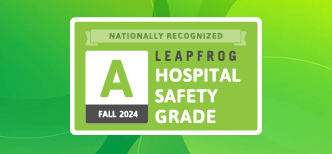


請點擊此轉換成中文
Headaches are a very common condition that most of us experience many times over the course of a lifetime. While there are multiple types of headaches, they all fall into one of two categories:
Migraine Headache
Migraine headaches are characterized by throbbing pain, usually on one side of the head. They are often accompanied by nausea or vomiting and increased sensitivity to light and/or sound. Many migraine sufferers experience warning symptoms known as an aura before the headache strikes. This may be a visual disturbance, such as a flash of light or blind spot, tingling on one side of the face or in a limb, or even difficulty speaking. Migraines can last anywhere from two hours to three days. Several classes of drugs help prevent or reduce the symptoms and frequency of migraines by balancing chemicals in the brain, including triptans, gepants and ditans, and ergot derivatives. Medication to reduce nausea or vomiting may also be prescribed. Some people respond to non-traditional treatments such as acupuncture or biofeedback.
Tension Headache
Sometimes called “hatband headaches,” tension headaches feel like your head is being squeezed by a too-tight hat. These are the most common type of headache and can last anywhere from a half an hour to an entire week. Tension headaches may respond to anti-inflammatories or muscle relaxants. Physical therapy and relaxation techniques can sometimes help. Some people find that massaging their forehead and temples with peppermint oil reduces discomfort.
Hypnic Headache
This rare form of headache, sometimes referred to as an “alarm clock headache,” only occurs at night during sleep, usually around the same time, and wakes the person up. Most common in people over 50, hypnic headache can last from 15 minutes to four hours. Melatonin or certain medications can help. Patients are also commonly prescribed bedtime doses of caffeine which do not interfere with sleep in hypnic headache sufferers.
Cluster Headache
Five times more common in men than women, cluster headaches occur on one side of the head and are usually centered around one eye, although the pain can radiate to the face, head, and neck. The eye on the affected side may appear swollen, teary, droopy, and red. Nasal congestion can also be a symptom. These painful and debilitating headaches last between 20 minutes and two hours, but a person may have several a day for weeks. Cluster headaches are difficult to treat. Some people respond to prescription nasal spray or injections of a medication called sumatriptan.
Exertional Headache
These headaches occur during or after physical exercise or sexual activity. They usually respond well to nonsteroidal anti-inflammatories (NSAIDs) like ibuprofen (Advil) or naproxen (Aleve).
Caffeine Headache
Excessive caffeine consumption or sudden withdrawal from caffeine can lead to headaches. Caffeine headaches can be treated with over-the-counter headache medicine.
Hunger Headache
Headaches when you’re hungry are a signal that you need to eat something! You could be experiencing muscle tension or hypoglycemia (low blood sugar), which can trigger the release of stress hormones, causing a headache. The symptoms quickly dissipate once you eat.
If you are prone to headaches, you may have already noticed what tends to trigger them. Common triggers include:
If you just connected any of these triggers to your headaches, try to avoid those behaviors and track the impact it has on the frequency and severity of your headaches.
Dehydration headache
Caused by lack of fluid in the body, dehydration headaches are usually accompanied by other symptoms, including a dry mouth, dark colored urine, dizziness, fatigue, and of course, thirst. Some people describe feeling as though their brain is being “squeezed like a sponge.” You don’t have to run a marathon to get a dehydration headache – just sitting at your desk all day without hydrating can do it. Treat this type of headache with an aspirin or two and a big glass of water.
Dental problems
Some people respond to stress by clenching their jaw or grinding their teeth. This irritates the trigeminal nerve, which provides sensation to the face, teeth, and gums, and can trigger headaches. Toothaches can also cause headache pain. While over-the-counter pain relievers can help, it’s important to see a dentist.
Sinus Headache
These headaches are usually due to sinus inflammation or congestion due to allergies or a sinus infection. They typically cause pain and pressure in the forehead, cheeks, and around the eyes. They can be accompanied by a stuffy nose, decreased sense of smell, fatigue, and aching in the upper teeth. The pain gets worse if you bend over or lie down. Symptoms of a sinus headache can resemble those of a migraine, but without the nausea, vomiting, or sensitivity to noise and bright lights. Nasal spray, decongestants, or the use of a humidifier can help. If the headache is accompanied by a sinus infection, antibiotics are prescribed.
Hormone Headache
Fluctuations in hormones can trigger headaches, especially in women. These often occur during menstruation, pregnancy, or menopause. Women with regular cycles are sometimes prescribed medication a few days before and then during their period. Those with irregular cycles or headaches throughout the month may end up taking a variety of daily medicines, including beta blockers, anticonvulsants, calcium channel blockers, antidepressants or magnesium.
Thunderclap Headache
Thunderclap headaches are sudden and extremely severe – a person can go from feeling fine to excruciating pain in minutes. These rare headaches may be a symptom of a life-threatening condition such as a brain bleed, leaking of cerebrospinal fluid, severe hypertension, meningitis or encephalitis, or an ischemic stroke. Thunderclap headaches requires an immediate trip to the Emergency Department.
While the majority of headaches aren’t serious and will go away on their own, some are a sign of a medical emergency. Seek medical care right away if you have:
If you are experiencing more headaches than normal, or they are more severe or unusual, make an appointment with your doctor to help determine the cause and rule out underlying conditions. Don’t have a primary care doctor? Find one here.
This article appeared in the June 2024 edition of the HealthPerks newsletter.

Identify your risk factors and what to do if you are at risk.